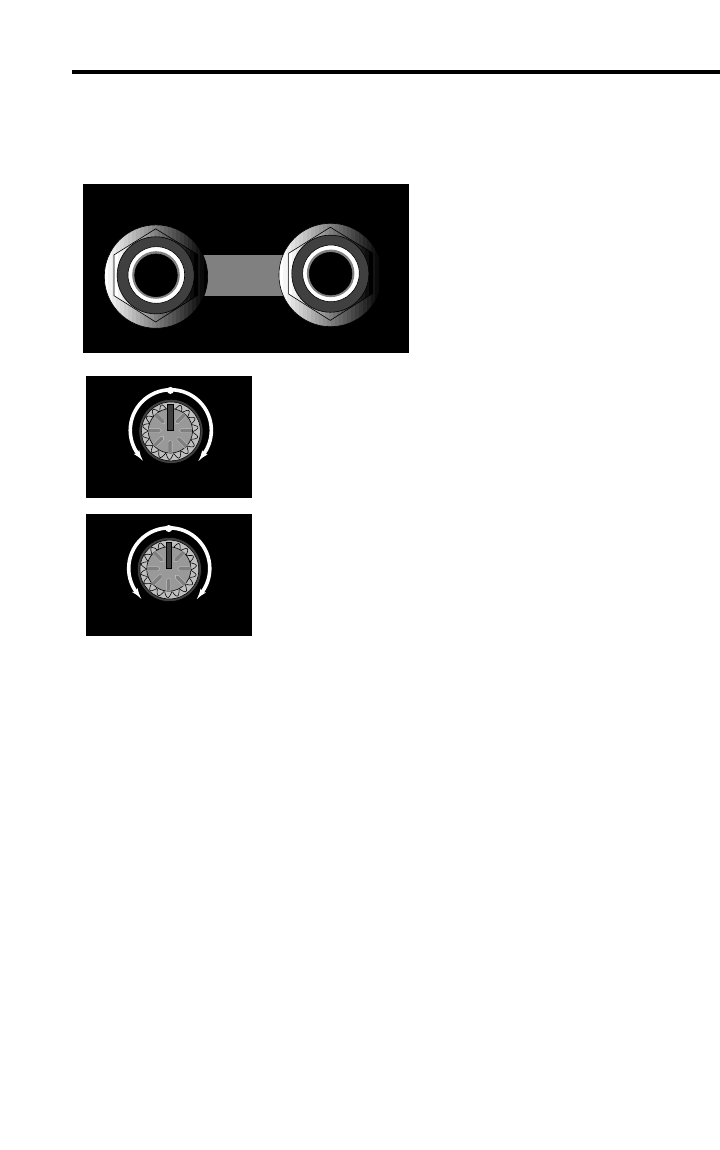
28
Using Pan/Balance
The final Main output of the
MIXPAD is stereo—that is, there
are two discrete output jacks,
labeled “left” and “right,” which
will normally be routed to a
stereo power amplifier and two
discrete speakers.* Because of
this, you will usually be working
with a stereo field that ranges from hard left to
hard right. The Pan control in monophonic
channels (and the Balance control in MIXPAD 12
and MIXPAD 9 stereo channels, when only the
upper input is connected) allows you to place
each individual sound at any point within this
left-right field, while keeping the overall level
constant.
You can use stereo panning creatively in a variety
of ways: For example, you might want to have
guitars coming from one speaker and keyboards
from another, or you might use panning to “spread” the signal from a
piano miked with two microphones—one over the bass notes (panned
left) and the other over the treble notes (panned right). By turning a Pan
knob while a signal is present, the sound appears to move in space (a
process known as
dynamic panning
)—this can be particularly effective
when applied to sound effects.
In live performance, you may want to resist the temptation to pan
anything completely hard left or right, since some members of the
audience not seated in the center of the venue may miss some signal
altogether. In these circumstances, you’re best to use modest panning,
with signals routed no further than the 9 o’clock and 3 o’clock positions.
* You can, of course, also use the MIXPAD monophonically—simply
route the same signal to both the left and right outputs.
RIGHT
OUTPUT
BALANCED
+4dBu
LEFT
LR
PAN
BALANCE
LR


















